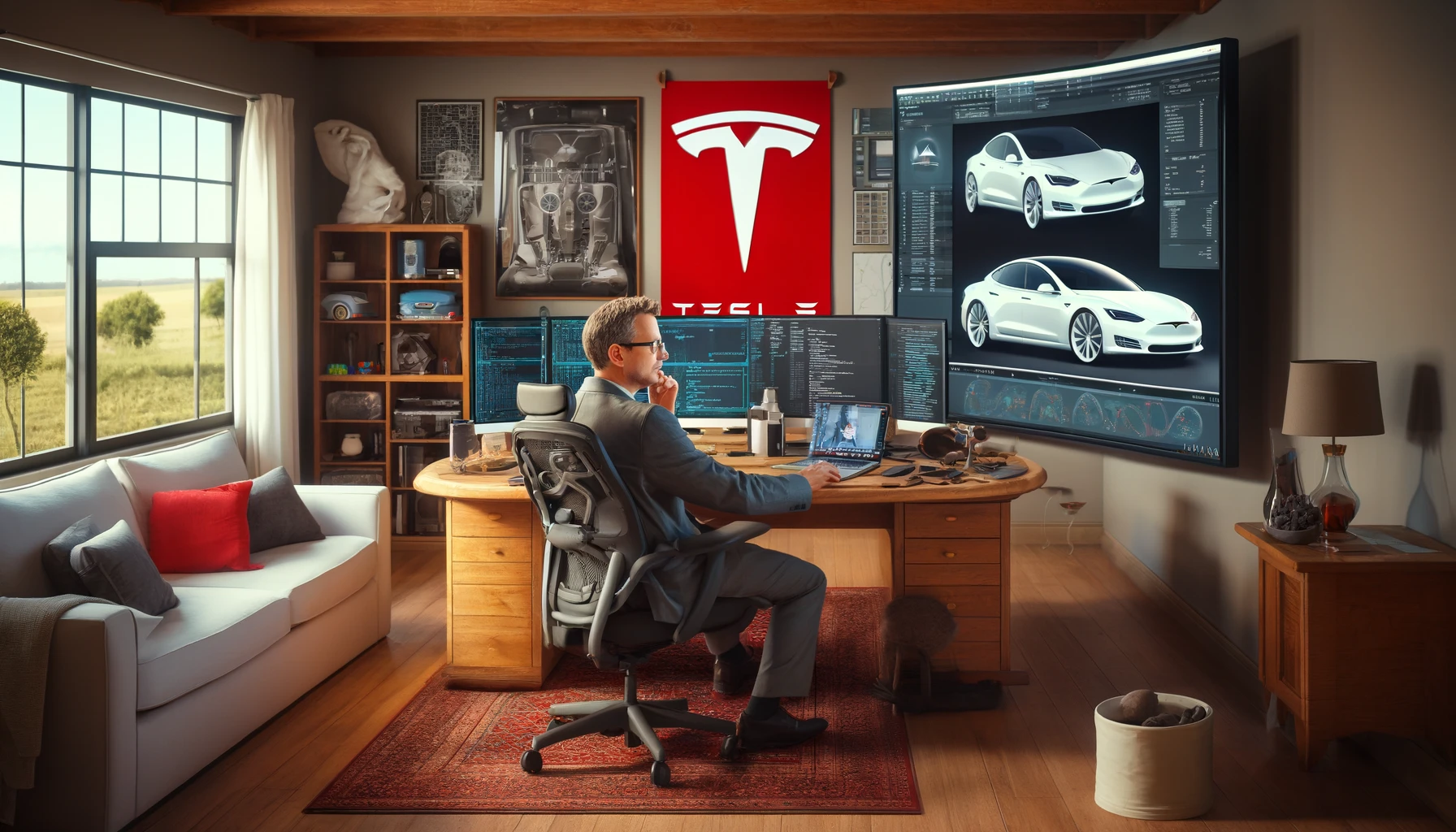In an unprecedented bid to annihilate the daily commute once and for all, Tesla has announced a groundbreaking new strategy: relocating its offices directly into the living rooms of its employees. The initiative, dubbed “Operation Homefront,” seeks to redefine the workspace and perhaps save on hefty corporate real estate costs.
Elon Musk, the visionary CEO, touted the plan in a series of late-night tweets, complete with a concept video showing a Tesla-branded modular desk unfolding next to a bewildered employee’s sofa. “Why commute when you can contribute from your couch?” Musk tweeted, followed by a string of alien emojis, perhaps hinting at the extraterrestrial inspiration behind the idea.
According to Tesla’s innovative plan, employees will receive a sleek, company-branded “office in a box,” which includes everything from a desk that doubles as a Tesla coil, to a chair with the same leather used in Model S interiors. The office setup would integrate seamlessly with Tesla Smart Home devices, turning the living room into a high-tech hub of productivity and, inevitably, mild family discord.
Critics, however, have raised eyebrows at the feasibility of such a plan. “Where do we draw the line?” asked one industry analyst. “What’s next, board meetings in the bathroom?” Meanwhile, urban planners worry about the implications for local zoning laws and the already blurred lines between work and home life.
Privacy advocates have also chimed in, concerned about the potential for corporate overreach into personal spaces. “It’s invasive enough that your boss can Zoom into your bedroom,” commented a privacy expert. “Now they want to park a workstation between your houseplants and your TV binge-watching spot?”
Yet, some employees are intrigued by the proposal, envisioning benefits like rolling out of bed straight to the workspace and the potential elimination of dress codes. “If I could work in my pajamas and still drive a Tesla, why not?” pondered one optimistic employee, who preferred to remain anonymous, possibly while sitting on a prototype office chair.
As the details of “Operation Homefront” continue to unfold, the world watches with bated breath—and perhaps a hint of skepticism—wondering whether this bold move will spark a revolution in remote work or simply end up as another eccentric chapter in the annals of Silicon Valley’s workplace innovations.

